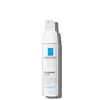What's inside
What's inside
 Key Ingredients
Key Ingredients

No key ingredients
 Benefits
Benefits

 Concerns
Concerns

 Ingredients Side-by-side
Ingredients Side-by-side

Water
Skin ConditioningIsocetyl Stearate
EmollientSqualane
EmollientButyrospermum Parkii Butter
Skin ConditioningDimethicone
EmollientGlycerin
HumectantAluminum Starch Octenylsuccinate
AbsorbentPentylene Glycol
Skin ConditioningPEG-100 Stearate
Glyceryl Stearate
EmollientCetyl Alcohol
EmollientDimethiconol
EmollientSodium Hydroxide
BufferingAcetyl Dipeptide-1 Cetyl Ester
Skin ConditioningAcrylates/C10-30 Alkyl Acrylate Crosspolymer
Emulsion StabilisingWater, Isocetyl Stearate, Squalane, Butyrospermum Parkii Butter, Dimethicone, Glycerin, Aluminum Starch Octenylsuccinate, Pentylene Glycol, PEG-100 Stearate, Glyceryl Stearate, Cetyl Alcohol, Dimethiconol, Sodium Hydroxide, Acetyl Dipeptide-1 Cetyl Ester, Acrylates/C10-30 Alkyl Acrylate Crosspolymer
Water
Skin ConditioningIsododecane
EmollientPropanediol
SolventDimethicone
EmollientCaprylic/Capric Triglyceride
MaskingPolyglyceryl-6 Polyricinoleate
EmulsifyingPolymethylsilsesquioxane/Trimethylsiloxysilicate
Butyloctyl Salicylate
Skin ConditioningC12-15 Alkyl Benzoate
AntimicrobialCoco-Caprylate/Caprate
EmollientPolyglyceryl-10 Dioleate
EmulsifyingC18-36 Acid Triglyceride
EmollientDimethicone/Vinyl Dimethicone Crosspolymer
Skin ConditioningPolyhydroxystearic Acid
EmulsifyingPolyphenylsilsesquioxane
Lecithin
EmollientPolysilicone-11
Fructooligosaccharides
HumectantGlycoproteins
Skin ConditioningBioflavonoids
Skin ConditioningCyamopsis Tetragonoloba Gum
Emulsion StabilisingGlycerin
HumectantButyrospermum Parkii Butter
Skin Conditioning1,2-Hexanediol
Skin ConditioningDisteardimonium Hectorite
StabilisingPropylene Carbonate
SolventAminomethyl Propanol
BufferingCaprylhydroxamic Acid
Polysorbate 20
EmulsifyingPentylene Glycol
Skin ConditioningDecyl Glucoside
CleansingXanthan Gum
EmulsifyingWater, Isododecane, Propanediol, Dimethicone, Caprylic/Capric Triglyceride, Polyglyceryl-6 Polyricinoleate, Polymethylsilsesquioxane/Trimethylsiloxysilicate, Butyloctyl Salicylate, C12-15 Alkyl Benzoate, Coco-Caprylate/Caprate, Polyglyceryl-10 Dioleate, C18-36 Acid Triglyceride, Dimethicone/Vinyl Dimethicone Crosspolymer, Polyhydroxystearic Acid, Polyphenylsilsesquioxane, Lecithin, Polysilicone-11, Fructooligosaccharides, Glycoproteins, Bioflavonoids, Cyamopsis Tetragonoloba Gum, Glycerin, Butyrospermum Parkii Butter, 1,2-Hexanediol, Disteardimonium Hectorite, Propylene Carbonate, Aminomethyl Propanol, Caprylhydroxamic Acid, Polysorbate 20, Pentylene Glycol, Decyl Glucoside, Xanthan Gum
Alternatives
Ingredients Explained
These ingredients are found in both products.
Ingredients higher up in an ingredient list are typically present in a larger amount.
This ingredient is also known as shea butter. It is an effective skin hydrator and emollient.
Emollients help soothe and soften your skin. It does this by creating a protective film on your skin. This barrier helps trap moisture and keeps your skin hydrated. Emollients may be effective at treating dry or itchy skin.
Shea butter is rich in antioxidants. Antioxidants help fight free-radicals, or molecules that may harm the body. It is also full of fatty acids including stearic acid and linoleic acid. These acids help replenish the skin and keep skin moisturized.
While Shea Butter has an SPF rating of about 3-4, it is not a sunscreen replacement.
Shea butter may not be fungal acne safe. We recommend speaking with a professional if you have any concerns.
Learn more about Butyrospermum Parkii ButterDimethicone is a type of synthetic silicone created from natural materials such as quartz.
What it does:
Dimethicone comes in different viscosities:
Depending on the viscosity, dimethicone has different properties.
Ingredients lists don't always show which type is used, so we recommend reaching out to the brand if you have questions about the viscosity.
This ingredient is unlikely to cause irritation because it does not get absorbed into skin. However, people with silicone allergies should be careful about using this ingredient.
Note: Dimethicone may contribute to pilling. This is because it is not oil or water soluble, so pilling may occur when layered with products. When mixed with heavy oils in a formula, the outcome is also quite greasy.
Learn more about DimethiconeGlycerin is already naturally found in your skin. It helps moisturize and protect your skin.
A study from 2016 found glycerin to be more effective as a humectant than AHAs and hyaluronic acid.
As a humectant, it helps the skin stay hydrated by pulling moisture to your skin. The low molecular weight of glycerin allows it to pull moisture into the deeper layers of your skin.
Hydrated skin improves your skin barrier; Your skin barrier helps protect against irritants and bacteria.
Glycerin has also been found to have antimicrobial and antiviral properties. Due to these properties, glycerin is often used in wound and burn treatments.
In cosmetics, glycerin is usually derived from plants such as soybean or palm. However, it can also be sourced from animals, such as tallow or animal fat.
This ingredient is organic, colorless, odorless, and non-toxic.
Glycerin is the name for this ingredient in American English. British English uses Glycerol/Glycerine.
Learn more about GlycerinPentylene glycol is typically used within a product to thicken it. It also adds a smooth, soft, and moisturizing feel to the product. It is naturally found in plants such as sugar beets.
The hydrophilic trait of Pentylene Glycol makes it a humectant. As a humectant, Pentylene Glycol helps draw moisture from the air to your skin. This can help keep your skin hydrated.
This property also makes Pentylene Glycol a great texture enhancer. It can also help thicken or stabilize a product.
Pentylene Glycol also acts as a mild preservative and helps to keep a product microbe-free.
Some people may experience mild eye and skin irritation from Pentylene Glycol. We always recommend speaking with a professional about using this ingredient in your routine.
Pentylene Glycol has a low molecular weight and is part of the 1,2-glycol family.
Learn more about Pentylene GlycolWater. It's the most common cosmetic ingredient of all. You'll usually see it at the top of ingredient lists, meaning that it makes up the largest part of the product.
So why is it so popular? Water most often acts as a solvent - this means that it helps dissolve other ingredients into the formulation.
You'll also recognize water as that liquid we all need to stay alive. If you see this, drink a glass of water. Stay hydrated!
Learn more about Water